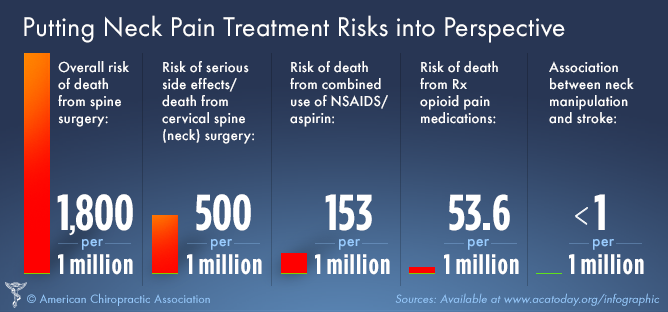The Partnership In Between Pain In The Back And Your Wellness: Typical Conditions And Their Signs And Symptoms
The Partnership In Between Pain In The Back And Your Wellness: Typical Conditions And Their Signs And Symptoms
Blog Article
Article Produced By-McKay Hamilton
If you're experiencing neck and back pain, your body may be trying to tell you something greater than simply discomfort. The method your back really feels can provide important clues regarding your total wellness. Comprehending the certain kind of discomfort you're really feeling and any kind of accompanying symptoms is crucial to untangling the enigma behind your discomfort. Let's check out the usual problems and symptoms related to different sorts of neck and back pain to clarify what your body might be signaling.
Types of Pain In The Back
When it concerns neck and back pain, there are numerous kinds that you may experience. One typical type is muscle discomfort, often brought on by overuse, strain, or injury to the muscles and ligaments sustaining the back. This type of pain can vary from moderate pain to serious and devastating pain.
Another kind is nerve pain, which can arise from problems like herniated discs or sciatic nerve pain. Nerve discomfort frequently provides as a sharp, shooting feeling that radiates down the leg.
Joint discomfort in the back can stem from concerns like joint inflammation or sacroiliac joint dysfunction. This type of pain is generally really felt in the reduced back and can be intensified by certain motions.
In addition, back pain can be connected to structural problems such as spine constriction or vertebral cracks. Understanding the sort of neck and back pain you're experiencing is vital in identifying the proper therapy and monitoring approaches.
Common Symptoms to Look For
Relocating past the numerous sorts of back pain, it's important to identify the common signs that can indicate underlying concerns.
acupuncture md nyc that gets worse with activity or at night could suggest a much more major issue. Feeling https://www.medicalnewstoday.com/articles/does-medicare-cover-chiropractic or tingling in the legs or feet, specifically when accompanied by weakness, could indicate a nerve-related issue. If you experience sudden weight loss in addition to neck and back pain, maybe an indicator of an extra systemic condition.
Focus on any modifications in bladder or digestive tract feature, as this could be connected to spinal cord compression. Fever, cools, or night sweats combined with pain in the back might indicate an infection. Watch out for pain that radiates down one or both legs, potentially a sign of sciatic nerve pain.
Wellness Issues Linked to Back Pain
If you suffer from neck and back pain, it's vital to comprehend the possible health conditions linked to this discomfort. Neck and back pain can be a symptom of different underlying issues, consisting of muscular tissue strains, herniated discs, osteoarthritis, spinal stenosis, and even conditions like kidney rocks or infections.
Muscular tissue stress prevail and usually arise from raising hefty items or unexpected motions.
Herniated discs occur when the soft tissue in between vertebrae protrudes, causing nerve inflammation.
Osteo arthritis, a degenerative joint disease, can lead to neck and back pain as cartilage material wears down.
Spine stenosis, the constricting of the spine canal, can tax nerves.
Kidney stones might trigger extreme back pain if they move right into the urinary system.
dr schram like spinal osteomyelitis can likewise show up as back pain. Comprehending these prospective health conditions can assist you seek appropriate medical care and administration for your neck and back pain.
Final thought
So, next time your back injures, take notice of the type of discomfort and accompanying signs and symptoms. It could be a signal from your body about underlying health conditions like muscle pressure, nerve issues, joint issues, and even structural concerns. By recognizing these indicators, you can take aggressive actions to address the root cause of your pain in the back and improve your general health and well-being.
